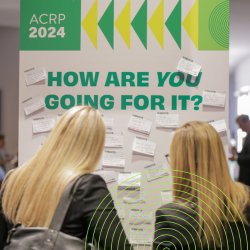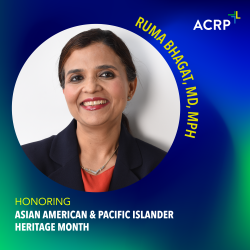As with many other professional associations, earning a one-time certificate of achievement in a focused topic from the Association of Clinical Research Professionals (ACRP) can be a valuable, as-needed pursuit to bring one up to speed in a new job function in one’s daily work. As well, it can be part of preparing oneself to eventually take a detailed certification test (to become a Certified Clinical Research Coordinator (CCRC®) or Certified Clinical Research Associate (CCRA®), for example), and an option for accumulating the contact hours needed to maintain an existing certification with ACRP.
On a display board in the lobby at the recent four-day ACRP 2024 gathering in Anaheim, Calif., inspirational sentiments were shared on notes left under the heading of “HOW ARE YOU GOING FOR IT?” by thoughtful professionals with their nearly 1,400 fellow attendees at the energetic and successful event.
In anticipation of the May 29 “Merck Journeys: Career Conversations within Clinical Research” virtual career event being held by Merck in partnership with ACRP, we asked Julia Buoscio, an Associate Clinical Research Associate based in the New York City area with the company, to share some details on her early-career progression since completing an internship with Merck and transitioning to a full-time position.
In recognition of May being Asian American and Pacific Islander (AAPI) Heritage Month, ACRP reached out for some thoughts on the importance of the event to Kiruthika Arumugam, MS, a Clinical Data Operator with Natera, Inc., and Treasurer for the ACRP Northern California Chapter. Before moving to the San Francisco Bay area, she studied biotechnology in India and gained several years of clinical research industry experience there in research and development and clinical data management through work with Avesthagen and IQVIA.
In recognition of May being Asian American and Pacific Islander (AAPI) Heritage Month, ACRP reached out for some thoughts on the importance of the event to Ruma Bhagat, MD, MPH, Senior Director for Global Health Equity and Population Science at Genentech, where she leads cross-organizational efforts that advance health equity and inclusive research by broadening the scientifically driven representation of understudied patients in research.




